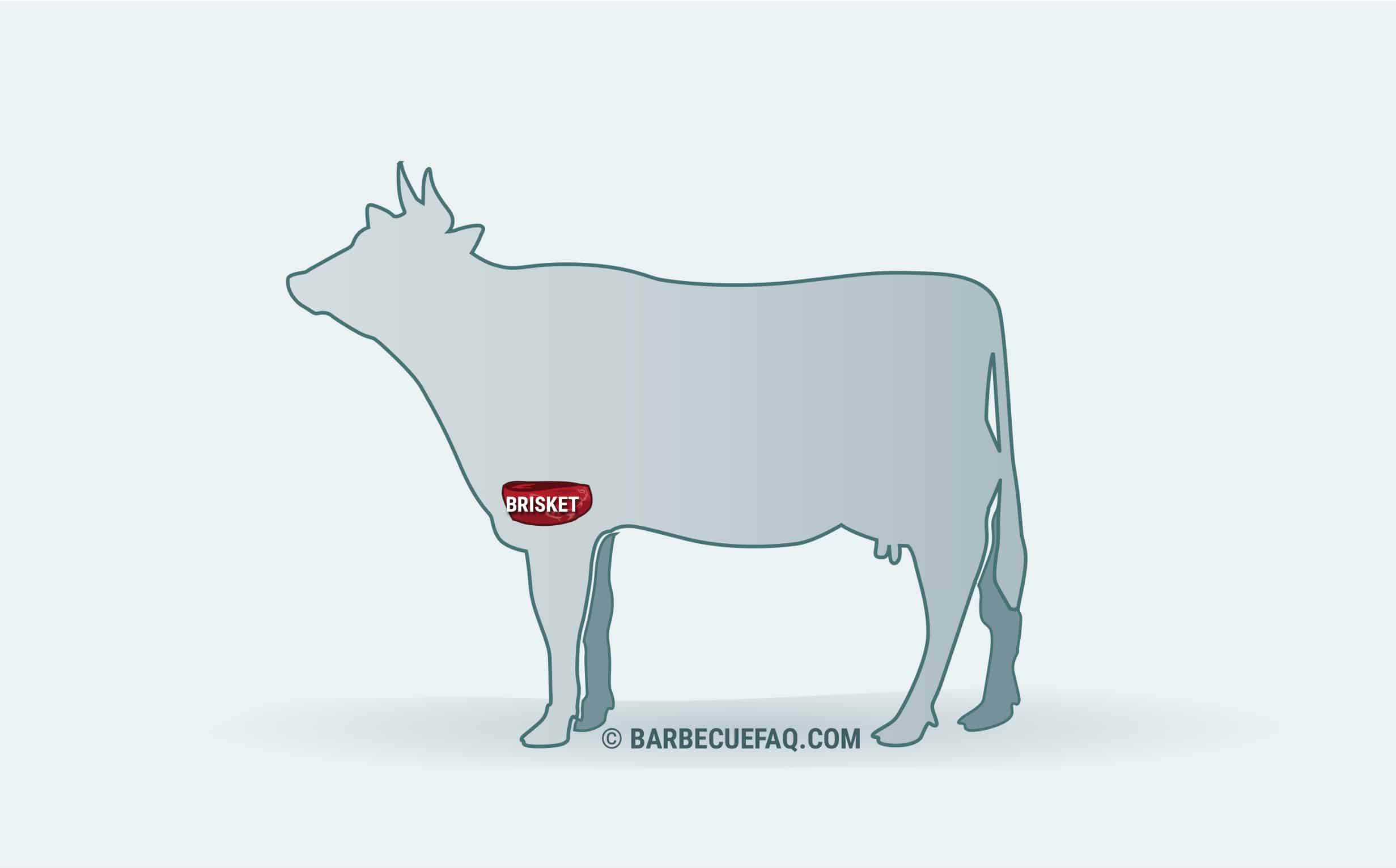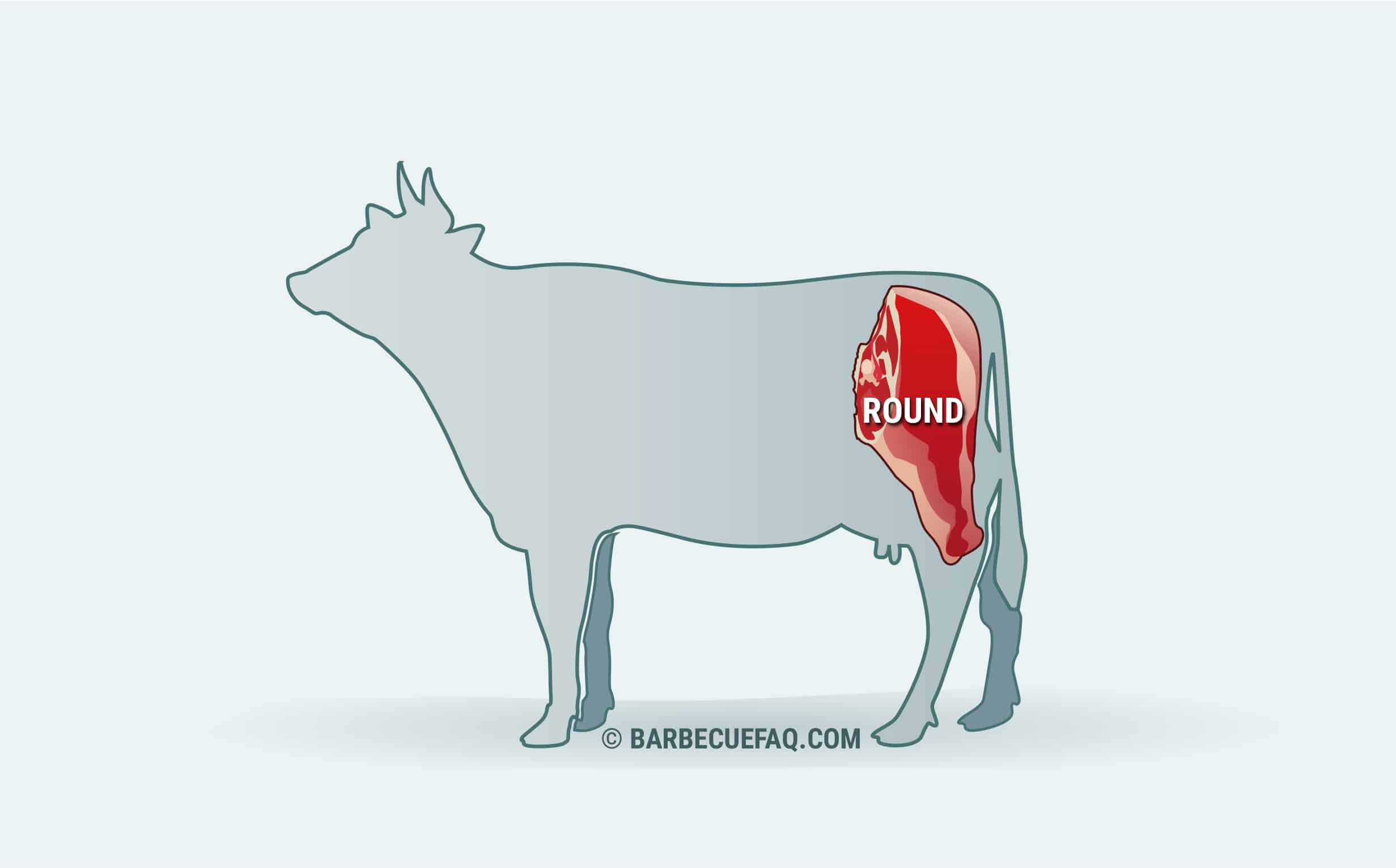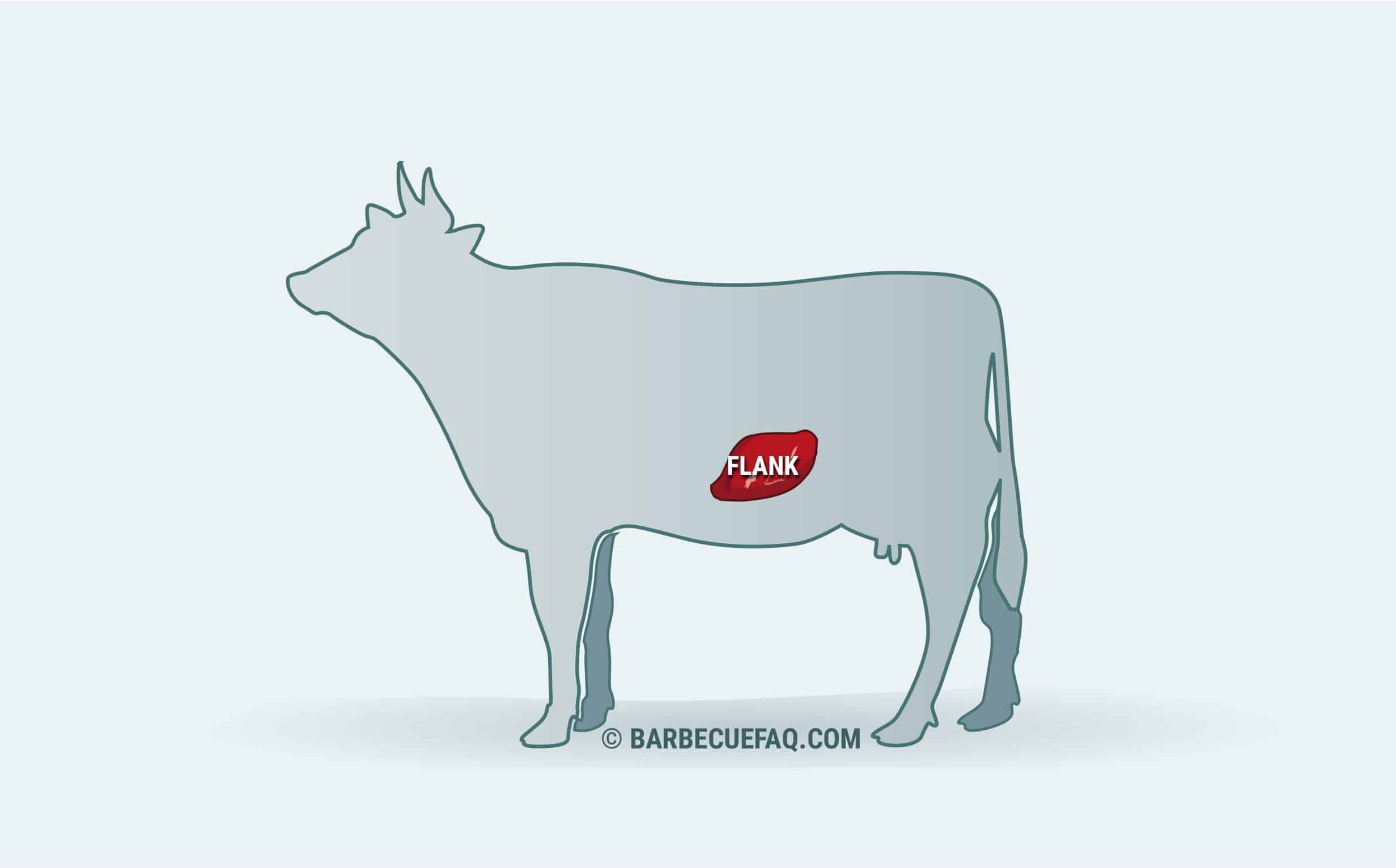Cuts of Beef From Primal Cuts
Shopping for beef cuts at a grocery store can be quite confusing; especially if you aren't familiar with the different cuts. Cuts of beef are not only labeled differently but also come in different sizes and prices. While butchers can cut beef into in a variety of ways ending up with any number of cuts, (depending on the region and their own unique practices), all cuts originate from the 8 primal cuts of beef as identified by the USDA. Simply put, a cow is initially divided into 8 primal cuts, which are then divided into sub-primal cuts. Butchers cut up these sub-primal cuts into smaller cuts to be sold to consumers. The cut that ends up on your plate is considered to be the final cut and is referred to as a portion cut. The price, flavor, fat content and tenderness of each cut you see at the grocery store are all determined by the characteristics of the primal cut they came from. As a rule of thumb, the farther away a cut is from the horns and hooves, the softer and pricier it is. This means that the center cuts are softer and pricier than the other cuts. The main reason for this is that the muscles farthest from the hooves and neck do less work, thus being softer than those that are worked heavily on a regular basis. The brisket cut is obtained from the breast of the cow under the first five ribs. It is often sold without the bone and divided into two sections, the flat and point cut. It can also be sold as a "Packer's cut" which is the whole brisket. The flat or lean is noted for containing less fat and is more expensive than the point cut which contains more fat. It is usually tougher because of its proximity to the hooves. When prepared properly it is one of the most flavorful cuts of meat. Brisket needs a lot of time at a lower temperature to tenderize. Right in front of the brisket, comes the shank cut. This cut is known to be one of the toughest of all 8 cuts, and requires a lot of preparation to tenderize it. Since it is so tough, this cut is mainly used in the preparation of soups and stews. Shank cuts are usually cooked for extended periods allowing the meat to tenderize as much as possible. These cuts are obtained from the cow's backbone and ribs. To be more specific, only the last 6 to 12 of the 13 pairs of ribs on a cow are included in the primal rib cut; the chuck cut takes the remaining ribs. Rib cuts are known for their tender, flavorful nature. The high amount of marbling in these cuts is one of the main reasons behind their rich flavor. The loin is located just behind the ribs, at the top part of the cow; farthest from the horns and hooves. The most tender and priciest cuts of beef come from the loin, which is usually divided into two main parts, the sirloin and the short-loin. Since the muscles in this part of the cow are not worked very hard, the meat tends to be quite tender. While the sirloin is slightly tougher than the short-loin, it is considered to be the more flavorful of the two. At the hind legs and rump of the cow you have the round cut. While this primal cut of beef tends to be lean, it is also tougher as the muscles around this part of the steer are usually worked hard on a regular basis. The round cut is among the most inexpensive beef cuts you can find in a grocery store. Another tough beef cut is the chuck. This cut is found on the cow's shoulder area; one of the most heavily worked muscles on the entire animal. However, even with its toughness, the chuck is considered to be among the most flavorful cuts. Butchers usually cut the chuck into a wide variety of cuts, giving customers numerous options to choose from. Right below the loin you have the flank cut, which is one of the toughest beef cuts but also one of the leanest. This flavorful cut does not have any bones. In the past the flank was considered to be an inexpensive cut. However, its low fat content has elevated its status as one of the most sought after, and with it, increased its price. Granted, on a per pound basis it's still less than a desirable cut like a Ribeye. The flank primal produces only one sub-primal the flank steak - also called the Jiffy steak and London broil. The short plate primal is found in the abdomen area of the cow, below the rib primal. Plate cuts tend to have a tight grain structure and are fattier than rib cuts; For this reason they offer a great quality-price ratio. The most popular short-plate cuts include skirt steak, plate short ribs, and hanger steak. As you can see from the above, different beef cuts are associated with different levels of flavor, tenderness, and fat. These unique characteristics have a bearing on just how suitable a given cut is to the type of meal you intend to prepare. Knowing the different cuts of meat available at your local grocery store will not only help you pick the best cuts for different cooking methods and meals but will also help reduce the amount of time you spend simply blankly staring at the meat case. To ensure that you make a more informed buying decision, keep the above information in mind. You might not be able to remember everything above; however, identifying different beef cuts will become easier with time.
Primal Cuts of Beef
1. Brisket Primal

2. Shank Primal

3. Rib Primal

4. Loin Primal

5. Round Primal

6. Chuck Primal

7. Flank Primal

8. Short Plate Primal

Final Thoughts
Source: https://barbecuefaq.com/primal-cuts-of-beef/
Posting Komentar untuk "Cuts of Beef From Primal Cuts"